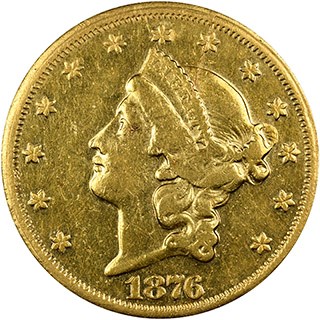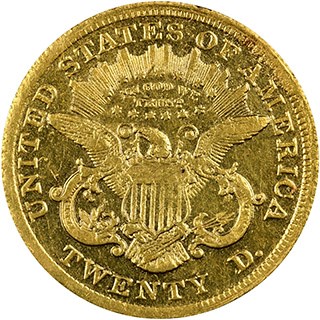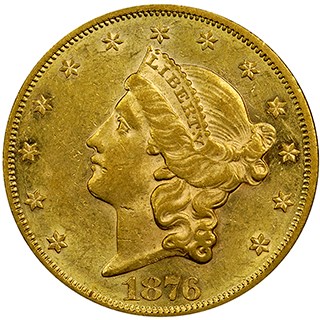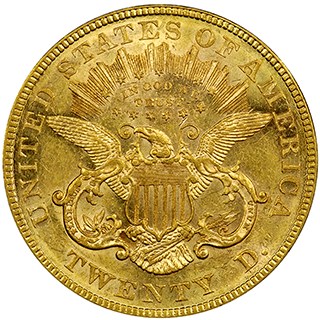Counterfeit Detection: 1876 US Double Eagle
Posted on 3/1/2019
By Numismatic Guaranty Corporation
The Philadelphia Mint struck more than 583,000 double eagles (gold $20) in 1876. This mintage, while less than the nearly 1.6 million struck in San Francisco that year, is respectable for the $20 Liberty Head series (1849-1907).
Even though 1876 is considered a common date for $20 Liberties, counterfeiters continue to target them. Recently, the Numismatic Guaranty Corporation (NGC) grading team spotted the fake shown here among the coins in a collector’s submission.
 |
 |
| The counterfeit 1876 Double Eagle displays mushy, almost frosty devices and abnormally reflective surfaces. Click images to enlarge. |
|
As you can see, the counterfeit has an odd appearance. Its surfaces exhibit an abnormal sheen, almost as if the coin is proof like. This is especially apparent on the reverse, where the devices are almost frosty and the fields are slightly reflective.
 |
 |
| Genuine 1876 Double Eagle. Click images to enlarge. |
|
If you compare the fake to the genuine article, you will note that the authentic coin has much more detail, even though it is slightly circulated. Its devices are sharp, and its surfaces are lustrous, as opposed to the rounded images and prooflike fields of the spurious specimen. The lettering on the reverse of the fake is poorly defined and mushy, and the denticles along the rim above AM of AMERICA are virtually obliterated.
 |
|
| The denticles above AM are almost obliterated. Click image to enlarge. |
|
Coin authentication often involves more than just visual inspection. The counterfeit weighs only 31.31g, 6 percent lighter than mint specifications (33.43g). However, the coin appears to be struck in gold that is almost as pure as that of an authentic specimen. This suggests it was struck to fool collectors, or that it was intended to be slipped in with a group of lower-quality double eagles to disguise that 2g of gold were missing.
When examining a coin, numismatists must use all the tools at their disposal. Although the counterfeit pictured here would scream “Fake!” to an experienced authenticator and grader, a numismatist could easily come to the same conclusion with just a bit more scrutiny. When in doubt, submit your coins for authentication and grading by NGC, which guarantees the accuracy of its evaluations.
Reproduced with permission from the August 2018 edition of The Numismatist, official publication of the American Numismatic Association
Stay Informed
Want news like this delivered to your inbox once a month? Subscribe to the free NGC eNewsletter today!
